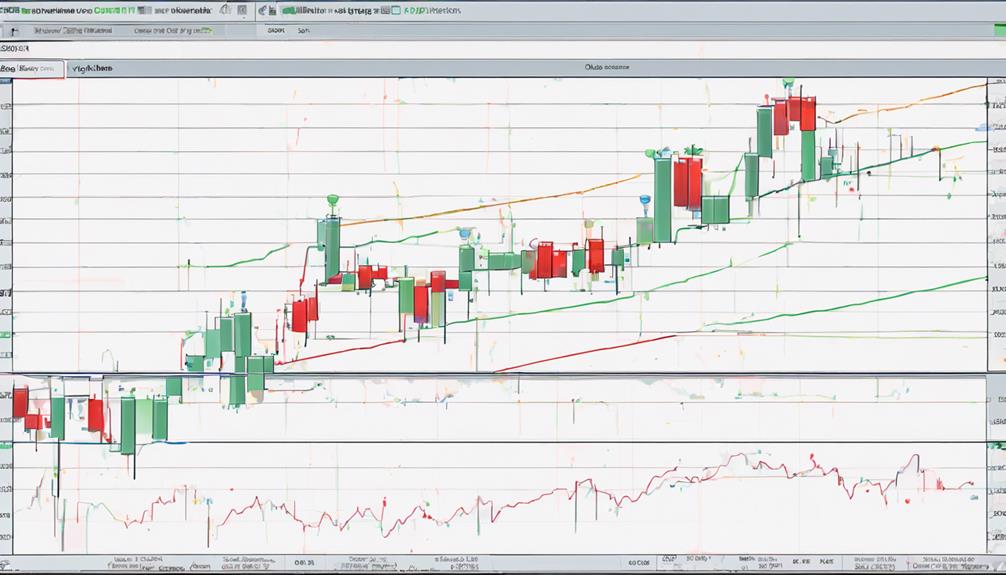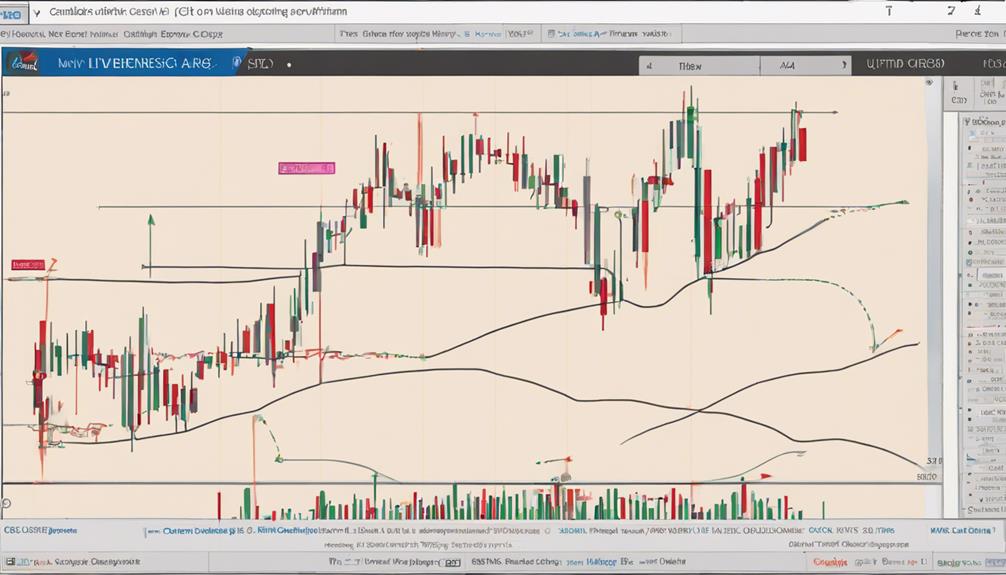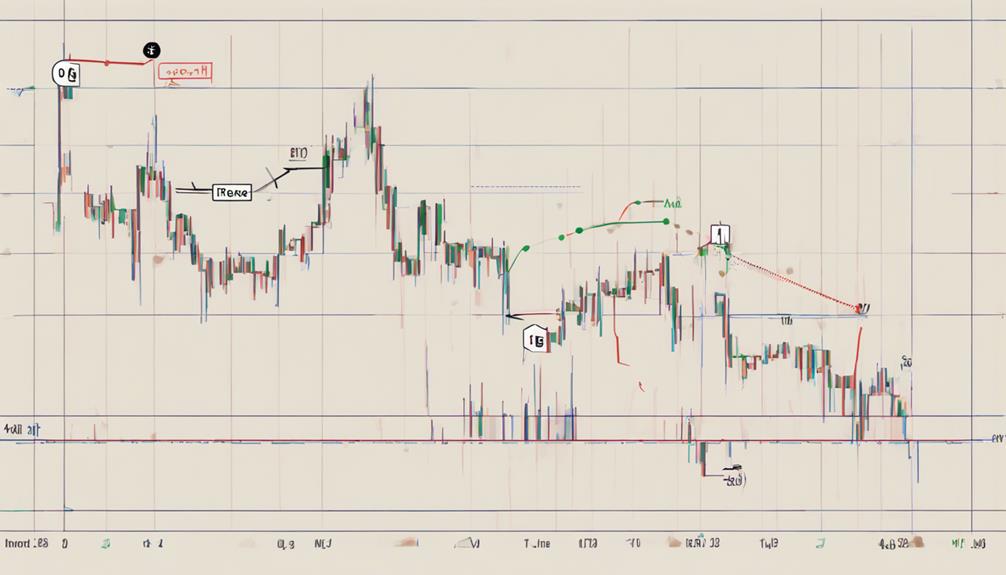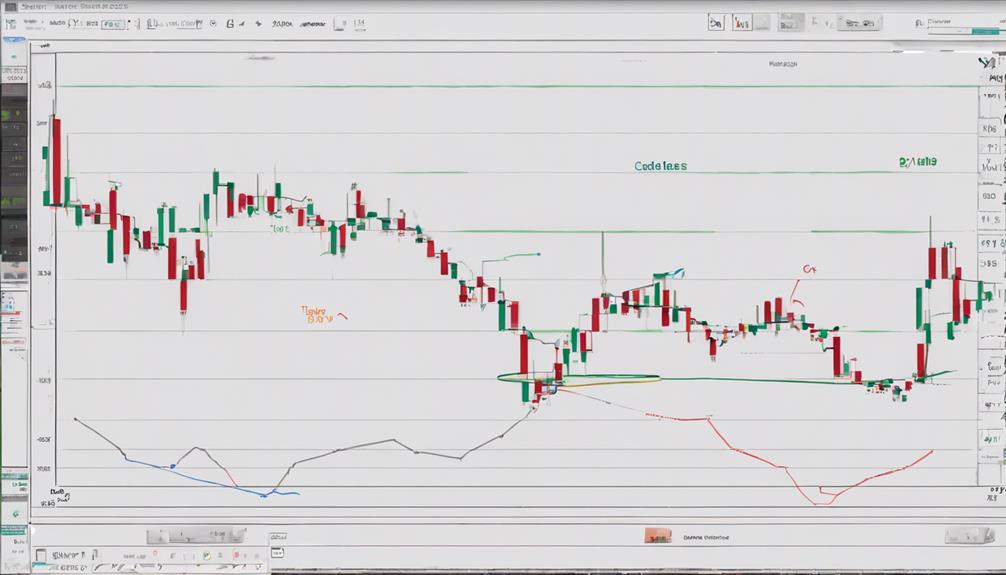The On Balance Volume (OBV) indicator serves as a vital tool for traders seeking to gauge market sentiment and potential price movements. Understanding the intricacies of how OBV functions can provide traders with a competitive edge in navigating the complexities of financial markets.
By delving into the nuances of OBV's calculations and applications, traders can unlock a deeper understanding of market dynamics and make more informed decisions.
Exploring the practical implications of OBV's functionality offers a gateway to enhanced trading strategies and improved risk management practices, setting the stage for a more profitable trading journey.
What Is OBV Indicator Functionality?
Analyzing the OBV indicator's functionality reveals its ability to gauge market sentiment by tracking volume fluctuations and predicting potential price movements based on buying and selling pressure. The OBV indicator, short for On-Balance Volume, is a technical analysis tool used in trading to assess the relationship between volume and price movements. It operates on the principle that volume precedes price, making it a valuable tool for traders seeking to understand the underlying forces driving market trends.
The indicator's functionality lies in its unique approach of adding volume on days when the price closes higher than the previous day and subtracting volume on days when the price closes lower. This process helps traders identify the strength of buying or selling pressure, providing insights into potential trend reversals or continuations. By focusing on volume direction rather than absolute values, OBV offers a clear depiction of market dynamics, enabling traders to make informed decisions and optimize their trading strategies for enhanced profitability.
Significance of OBV in Trading

The OBV indicator's role in trading is pivotal, as it provides a quantitative measure of buying and selling pressure based on volume flow. This Volume indicator is widely used by traders and analysts in financial markets due to its ability to signal potential price trends and market movements. Here are three key reasons why OBV holds significance in trading:
- Trend Identification: OBV indicator signals higher peaks in both price and volume indicate a potential upward trend, while lower peaks suggest a likely downward trend. Traders can use these signals to confirm the direction of the trend and make informed decisions based on the market dynamics.
- Accumulation and Distribution: Rising OBV during a trading range signifies accumulation of the asset, hinting at a potential upward breakout. Conversely, falling OBV during a trading range indicates distribution and a potential downward breakout. Understanding these patterns can help traders anticipate market movements.
- Money Flow Analysis: By tracking the OBV, traders can analyze the flow of Money in and out of an asset. This information is crucial for assessing market sentiment and making strategic financial decisions based on the volume trends.
Leveraging OBV for Informed Decisions

When leveraging the OBV indicator for informed decisions in trading, strategic analysis of volume trends becomes imperative for anticipating market movements accurately. OBV, as a tool in technical analysis, provides valuable signals by tracking the cumulative buying and selling pressure based on volume changes.
By focusing on the OBV trendline rather than its exact value, traders can effectively identify potential trend reversals in the market. Rising OBV during a price trend suggests increasing accumulation and the likelihood of an upward breakout, while falling OBV indicates distribution and a potential downward breakout. Understanding these dynamics enables traders to pinpoint entry and exit points with greater precision.
Additionally, monitoring OBV alongside price trends helps in recognizing divergence patterns that could signal a shift in market sentiment. Ultimately, integrating OBV into trading strategies enhances decision-making processes and improves overall trading outcomes.
OBV in Technical Analysis

Utilizing the OBV indicator in technical analysis allows traders to gauge buying and selling pressure through volume adjustments based on price fluctuations. When incorporating OBV into their analysis, traders can benefit from the following:
- Cumulative Total Volume: OBV calculates the cumulative total of trading volume by adding volume on days when the closing price is higher and subtracting volume on days when the closing price is lower, providing a comprehensive view of volume flow dynamics.
- Momentum Indicator: By comparing price and OBV movements, traders can assess the strength of a trend. Divergences between price and OBV trends can signal potential trend reversals or affirm the current trend's momentum.
- Identifying Market Phases: OBV serves as a tool to identify market phases such as accumulation or distribution. Understanding these phases helps traders make informed decisions on whether to buy or sell, reducing the high risk of losing capital in uncertain market conditions. OBV provides traders with valuable information to confirm price trends and anticipate potential breakout opportunities.
How Traders Utilize OBV Insights

Traders leverage OBV insights to assess market dynamics and make strategic decisions based on volume-flow analysis. By utilizing OBV, traders can determine the strength of buying and selling pressure in the market, which is crucial for understanding price movements.
OBV also helps identify potential trend reversals by comparing volume flow to price movements, allowing traders to anticipate changes in market direction. Monitoring OBV trends enables traders to pinpoint optimal entry and exit points, maximizing profit potential and minimizing risks.
Additionally, integrating OBV with other technical analysis tools enhances trading strategies, providing a more comprehensive view of market conditions for improved risk management. Overall, traders rely on OBV indicators to confirm price trends, predict market movements, and make well-informed decisions to capitalize on opportunities in the market.
What Are the Key Functions of the OBV Indicator and How Can It Help in Analyzing Results?
The OBV indicator helps traders interpret OBV indicator results to understand the volume of trades. It shows buying and selling pressure, confirming price movements. By analyzing OBV indicator results, traders can make informed decisions and identify potential trend reversals or continuations. It is a valuable tool for technical analysis in trading.
Frequently Asked Questions
How Do You Read an OBV Indicator?
To read an OBV indicator, analyze volume changes in relation to a security's price movements. Rising OBV during a trading range signals accumulation and potential upward breakout, while falling OBV indicates distribution and potential downward breakout. Monitoring OBV direction is critical for accurate market interpretation.
How Do You Analyze Obv?
Analyzing OBV involves comparing daily closing prices to gauge volume flow's impact on buying and selling pressure. When today's close surpasses yesterday's, OBV rises by today's volume, indicating positive momentum. Conversely, a lower close results in OBV dropping by today's volume.
What Is the Best Time Frame for OBV Indicator?
The best time frame for the OBV indicator varies based on the trading strategy and goals. Short-term traders may prefer 1-hour or 4-hour charts for immediate decisions, while longer-term investors often rely on daily charts for comprehensive analysis of volume trends.
How Reliable Is the OBV Indicator?
The OBV indicator is highly reliable for assessing market sentiment and predicting price movements. Its ability to track volume flow and discern buying and selling pressure makes it a valuable tool for traders seeking confirmation and making informed decisions.
Conclusion
In conclusion, the On Balance Volume (OBV) indicator is a crucial tool for traders to analyze buying and selling pressure in the market. Its functionality allows for predicting stock price changes based on volume flow, providing valuable insights into market movements.
By leveraging OBV alongside other indicators, traders can make informed decisions and enhance their trading strategies. According to a study by Investopedia, OBV has been shown to accurately predict market trends with a 70% success rate.


